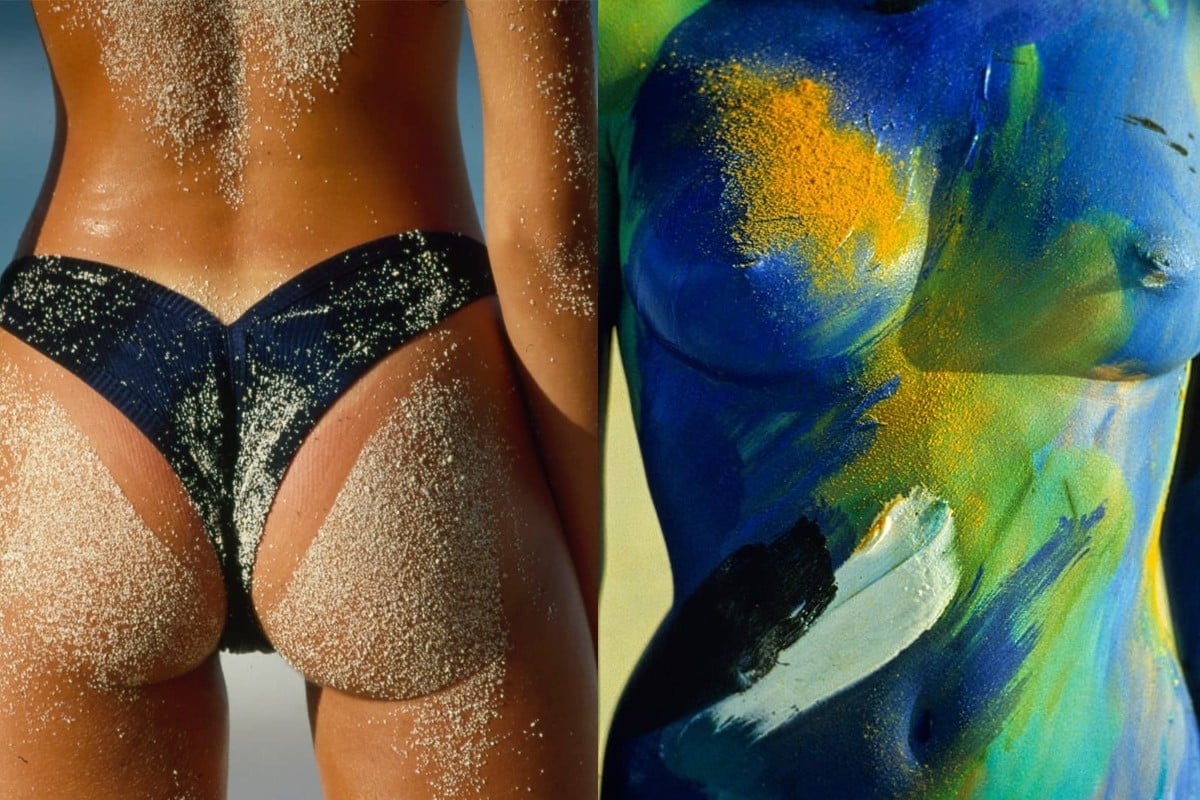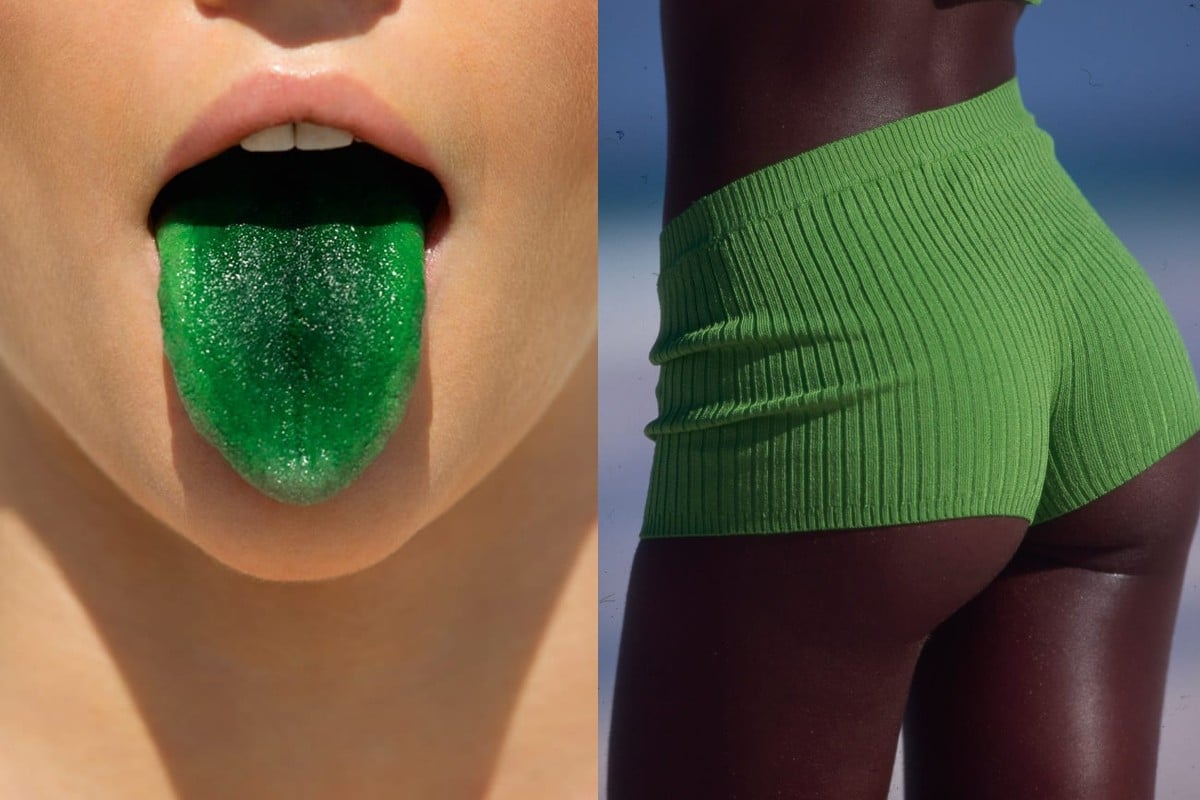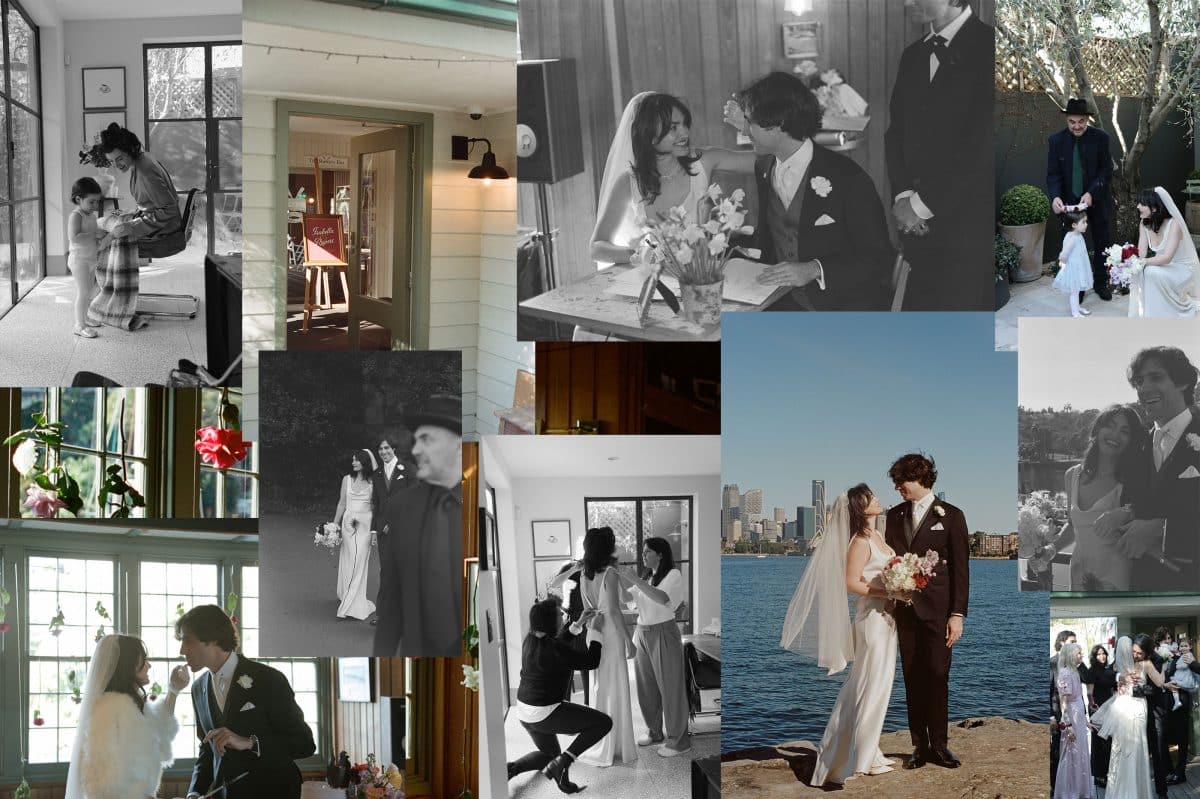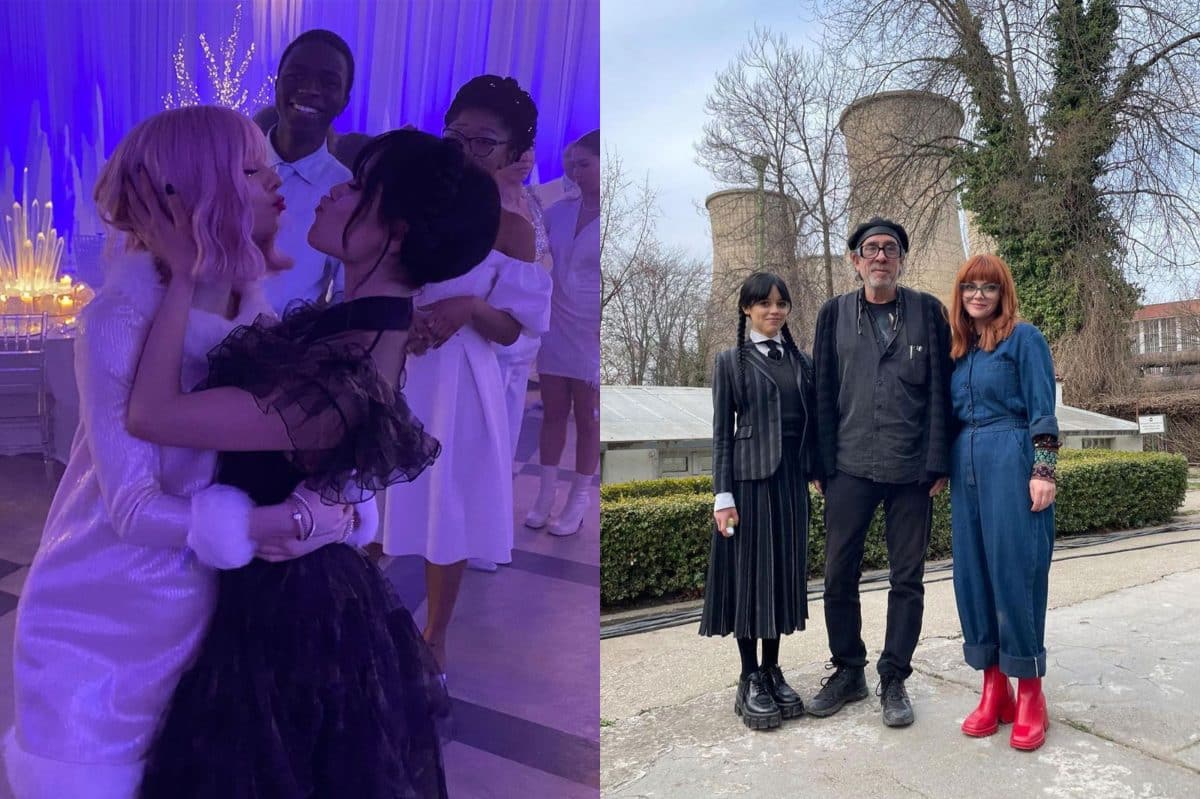
In the morning the light is golden and the shadows are blue. At midday, the light is hard and harsh, interrogating life with its relentless clarity. At dusk the light deepens, the gold is richer, slower-moving than morning, and the cool blue tones that define the shadows gradually bulge out to warmer shades of plum like an emerging bruise.
This is what nature offers the imagination of the photographer. These are the conditions. These, and all the subtle variations in between, make up the spectrum of possibility. Without artificial lights, filters, computer screens and studio cycs, these are the fundamentals of what we see: light, shadow and colour, exactly as it presents all around us.
Hans Feurer has been shooting pictures for a long time, around five decades. Since he first picked up a camera in the late 60s, the art of photography and the industry that surrounds it has altered dramatically. I won’t labour over the specifics here, there is no need, we’re all familiar with how digitisation and retouching technology has changed our visual landscape, sometimes for the better and sometimes for the disturbingly worse. With the exception of a precious few, it’s an unavoidable reality for the majority of contemporary photographers who wish to be hired to work within the universal digital framework. Feurer is one of those rare exceptions. To this day, in these times, he refuses to conform to what he sees as an indelible departure from nature, from life. It’s only the real stuff of the world that interests him – the smell of a woman’s skin, for example, the magic of a moment happening in real time, a girl rushing across the street with her bag falling open, the fine spray of the sea on a windy beach, or simply a dress on a living form animated by colour and texture and movement. The distinct style he has developed over the years is a response to this: bold colour, skin, movement, sex, something intensely visceral but just out of reach, so close and yet so far away.
“As much as possible I [try to capture] sensuality in relation to nature,” he tells me down the line in a lilting Swiss accent on a Saturday morning in Zurich, where he lives. “I’m kind of funny about this thing of virtuality and computers. I feel this is kind of like a cancerous growth in our civilization, so I try to completely keep off. You see I don’t want my fantasy to be influenced and deformed by virtuality and technology. I want my fantasy to be related to this planet earth, to nature, and not to a computer image. So I use computers really only to occasionally read emails, otherwise I don’t touch the bloody things!”
It might make him a hard man to get a hold of, but his insistence on keeping things as close to the natural world as possible - this unyielding devotion to his ‘fantasy’ - is undoubtedly what makes him an artist of singular vision and enduring relevance. Well ahead of his time, the free-flowing spontaneity of his signature paparazzi style images for which he’s become known captured the imagination of editors long before style blogging was a thing. “People have said I more or less invented ‘street style’ photography but this is of course not true, that’s something that existed a long time before,” he laughs. “But it’s because I try to do pictures of people in situations where you feel it’s in action, in life. It’s being lived rather than static in a studio. For many years I have never used any artificial help – no reflectors, no filters, no artificial lights etcetera. I always do it under real circumstances, using the available light whatever the situation is.”

Left: Elle France, 1988. PHOTOGRAPHY Hans Feurer FASHION Michelle Paquet. Right: Body Paint. Painted by Kodak, 1987, Switzerland. PHOTOGRAPHY Hans Feurer MODEL Gitta Sack.
Even when working with elaborate styling and locations, it’s really only this that concerns him, the impulses of life as it occurs. Pictures are static of course, staged or otherwise, but a Feurer frame is more like a chrysalid – you can see life taking shape, the process of formation, somehow in transition, moving from state to state. An effect he partly achieves through the distillation of elements, eliminating what’s extraneous in order for the essence of a moment to emerge, which can even mean removing himself almost entirely from the scenario. With the help of a powerful lens he has been known to shoot his models from so far away he needs walkie-talkies to communicate with them. “The tele-lens allows me to really crystalise what I feel is important and leave out the rest. All you have left afterwards is almost like a perfume, an atmosphere.”
While there’s no doubt Feurer’s as fastidious about his process as the next guy, there’s an unmistakable sense of freedom in his pictures that is a direct result of the ethos by which he lives and works. He’s not exactly a practicing Zen Buddhist, he’ll tell you, but the philosophy suits him quite nicely. “Zen Buddhism just sort of corresponds to the way I see things and feel about things myself. I don’t make a big thing about it but I have a tendency to always try and go right to the centre of things and understand the essence of things. It’s as simple as that.”
Fuerer began his career as a graphic artist, illustrator and art director in London after graduating from art school in Switzerland. When he first picked up a camera and began shooting professionally, he estimates around 1966, there was only film, retouching was practically non-existent and there was usually only a small team of people on set, if any. It was during this time he met his friend and colleague Harri Peccinotti – “You remind me, I must call him!” – who was working on Nova magazine, a progressive and bravely experimental publication for the time. His career took off shortly after he began shooting for Nova and, like his friend Peccinotti, was subsequently asked to shoot the iconic Pirelli calendar in 1974. It was through these early projects that Feurer really established his own aesthetic and became known as the photographer who would only shoot in colour – and lots of it. “For me, life is all colours. I see everything in colours. I think doing black and white pictures in this modern age is cheating a little, because the moment you do something in black and white it becomes artistic through the fact that it’s been changed. I think it must have been towards the end of the 70s that I decided I’d completely stop doing black and white, because life is colour and all around me I see colours.”
For a man so completely enchanted by the hues of nature, there is no place more invigorating than the vast and vivid landscapes of Africa where he spent around six years at the peak of his photography career simply exploring and collecting African art. “I’ve always had several parallel lives – photography’s not the centre of my life but it’s one of those things that I really enjoy doing. I also have a great passion for Africa and from about 1998 to 2004 I practically stopped doing photography completely and spent all my time in Africa [where I] collected African Art. I now have a huge collection of more than 4000 objects!”

Left: Vogue Paris, 2011. PHOTOGRAPHY Hans Feurer MODEL Sasha Pivovarova MAKEUP Lisa Houghton. Right: Elle France, 1998. PHOTOGRAPHY Hans Feurer FASHION Michelle Paquet.
That’s enough to send a person broke, which it almost did. When he returned from that long explorative sabbatical, inspired but penniless, he was eager to get back in the game. Photography was what he knew and what he loved, but his time away had meant redundancy from a notoriously fickle and rapidly changing industry. “I thought I could just sort of get back into photography again, but of course nobody wanted me anymore, I had become a has-been and a dinosaur. It took me quite a few years doing almost exclusively editorial to establish myself again in the business in order to get at least an interesting advertising job that would allow me to continue my life in comfort,” he laughs. Eventually as fashion became increasingly interested in nostalgia, his status went from has-been to icon, where it quite rightly sits today.
But I’m curious to know how an emphatically analogue man whose lateral passions include fishing and just being in nature feels about the digital age and all that has come with it? “I’ve been surprised and sort of annoyed at what’s happened in the last 15 to 20 years. I would have thought that people would get fed up with being presented totally sterilised pictures having been passed through computers and idealised” he pauses for a moment, breathes an almost defeated sigh. “All these images that you see, I mean especially looking at cosmetic and fashion advertising, it all looks the same. Everything is totally overworked and it doesn’t feel like these are pictures of people, they’re more like pictures of dolls – they all have plastic skin, there is no sensuality left once the computer has finished with it. So I decided to completely refuse going that way, I try to (provide a) counterpoint by doing pictures where you feel the real skin and you see it’s a human being who is breathing and warm.”
In a world that is increasingly presented to us through prescribed filters, Feurer’s perspective on image-making is a cool refreshment. And the fact that he’s still being hired to do what he does, how he does it, suggests that that the art of photography has not yet been lost – that there is something in us that craves an image so ripe and real and rich with colour that you can almost taste it, feel its texture and form. It takes an eye that sees beauty as multi-dimensional and tunnels persistently for the spirit that lies at the core of things to create an effect like this. It takes a photographer who refuses to smudge out the humanity in his subjects.
“If beauty is very pure it’s kind of almost boring. It’s this thing about yin and yang, of contrast,” he says referring back to the philosophies of Zen. “If it’s completely beautiful it’s almost boring and sterile, there has to be the presence of a disturbing element to make this beauty come alive. Like before when we were talking about retouching, a little bit is ok but when it goes too far the thing is dead, you’ve killed it. It’s flat and without soul. Because happiness of course only exists because of unhappiness. And joy without pain is practically non-existent.”
This exclusive interview with Hans Feurer first appeared in the Art of Fun issue, starring Lara Stone.



